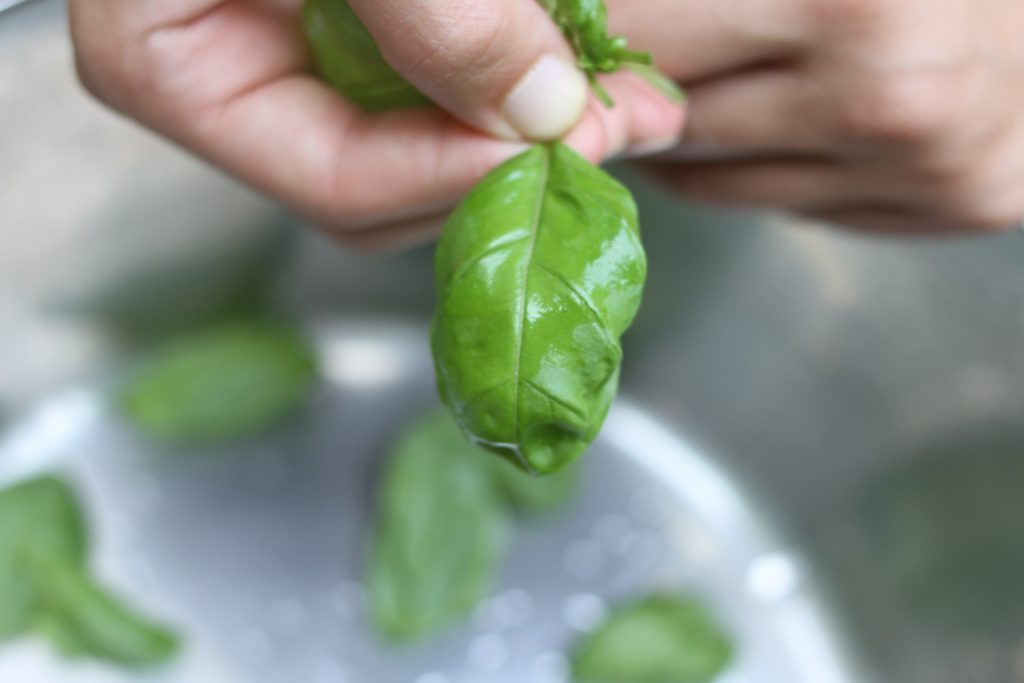Learning more about einkorn
A grain of einkorn is noticeably smaller than modern wheat varieties. Each einkorn kernel or wheat berry weighs half as much as a grain of regular wheat (22 mg vs. 46mg). You can also notice the difference because einkorn does not have the crease on one side. Darwin’s Theory of Evolution explains how plants evolved over thousands of years when humans selected better seeds at harvest and planted them each year, naturally changing plant genetics. Modern wheat also became considerably plumper as plant breeders worked to increase yields by creating new varieties for large-scale agriculture. When the size of wheat kernels changed, the proportion of nutrients that make up a seed or a wheat berry changed as well.
Wheat consists of three main parts- the bran is the coating of the seeds, the germ is the embryo of the seed and the endosperm is the starchy part of wheat where we get flour from. Researchers compared the proportion of bran, germ and endosperm of einkorn to that of modern bread wheat and here is what they found.
- Einkorn and modern wheat both have about 3% germ.
- Einkorn consists of 24% bran and modern wheat has 14% bran.
- Einkorn wheat has 73% endosperm and modern wheat has 83%.
Endosperm contains starch and einkorn has 15% less starch than regular wheat after milling. You can see that for yourself when you cook our pasta by noticing how clear the cooking water is.
WHOLE VS. WHITE FLOUR
When flour is milled whole, it contains all of the germ, bran and endosperm, but the germ and the bran deteriorate very quickly after milling and can become rancid. Germ and bran are often heat-treated by millers to ‘stabilize’ them so the flour is preserved longer. This is why we do not sell 100% Whole Einkorn Flour. Our einkorn flour is milled at 81%, with most of the germ and a portion of the bran sifted and removed from the finished product. Our product is never heat-treated. We believe the healthiest option for whole wheat is to grind wheat berries at home as needed, with a grain mill. When we make our whole wheat einkorn pasta, the wheat is milled fresh for each production and we slow dry our pasta at low temperatures.
Einkorn wheat has more protein, essential and trace minerals like iron and zinc. It also has an abundance of tocotrienols and lutein compared to modern wheat. What is interesting is that more of these nutrients are contained in the endosperm of einkorn, which means that white einkorn flour is more nutritious than white bread wheat flour. In fact, our einkorn flour has a golden color because it contains 70% more tocotrienols and 800% more lutein than regular white flour.
The more we learn about this grain, the more we love it! It yields less than one third of today’s wheat and it has a protective husk that reduces the weight of the harvest by 40%, which explains why so many ancient foods like einkorn have gone lost over time- for economics. The Living Planet Report was released a few days ago stating that we have lost 30% of plant varieties since 1970. It was already reported in 2010 by FAO that we have lost 75% of plant diversity since 1900. Choosing to eat einkorn wheat is a great choice for your own nutrition, but more importantly, it means supporting agricultural biodiversity.
References: A. Hidalfo, A. Brandolini (Food Chemistry 107 (2008) 444-448.






2 Comments